Last Updated on March 27, 2024 by Cathy
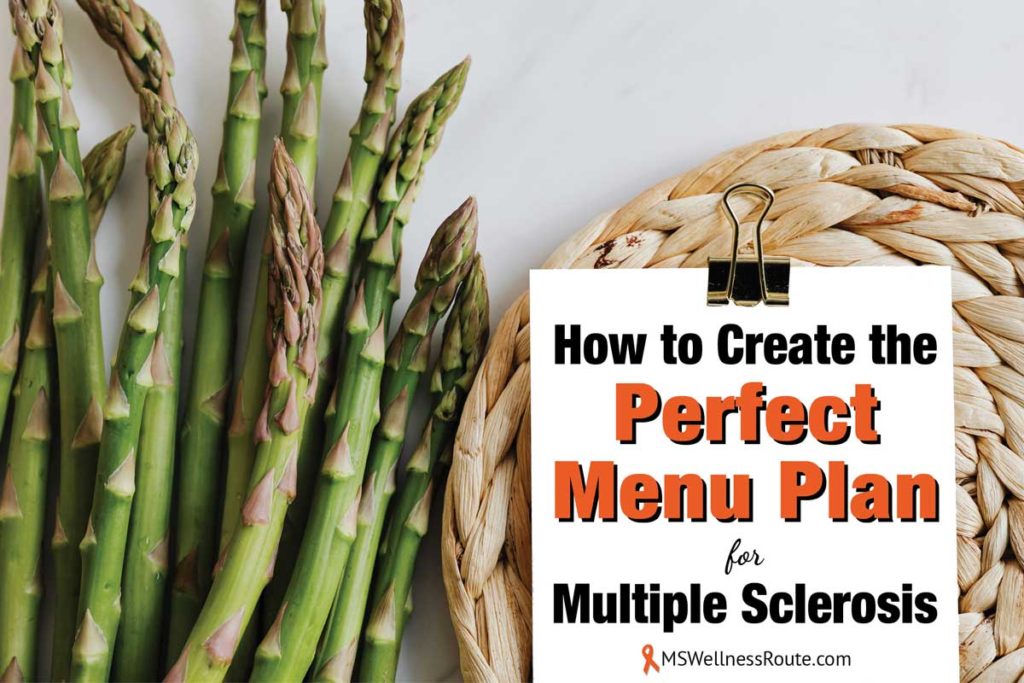
There are many diets for multiple sclerosis (MS) but not one is perfect for every MS patient. The best diet is one that fits your specific needs. It can feel overwhelming at times but here are easy steps to create the perfect menu plan for MS.
The key is to keep it simple. MS can make it hard when cooking and when you plan your menu. Don’t stress or get too tired. If you need to, take a break.
First, you need to know the two main nutrients. That is macronutrients and micronutrients. Macro means more and micro means less. Macronutrients include carbohydrates, fats, and protein. Micronutrients are amino acids, fatty acids, phytonutrients, vitamins, and minerals.
Every meal needs to include macronutrients. Although you need fewer micronutrients they are still very important to stay healthy. Eating phytonutrient-rich (colorful) vegetables and fruits supply many of these nutrients.
Include a wide range of food to make sure you are getting all of these nutrients. A recent study found people with progressive MS were nutrient deficient.
One way to track your nutrients is by using the Cronometer app. It is well known that people with MS have a vitamin D deficiency. But, even when you are eating a healthy diet you could be low in other nutrients. Not necessarily deficit but low.
I discovered this after tracking my nutrients and found I was consistently low in vitamin E and magnesium. Vitamin E is an antioxidant and essential for people with MS. Calcium works with magnesium, it needs to be a 1:1 ratio to balance out. Magnesium is needed for the body to properly absorb calcium.
One of the signs of magnesium deficiency is often fatigue which is an MS symptom. Studies found people with MS often have lower levels of magnesium and other nutrients.
If you missed the first part of this story please read: How To Create The Perfect Diet for MS
Dairy Alternatives
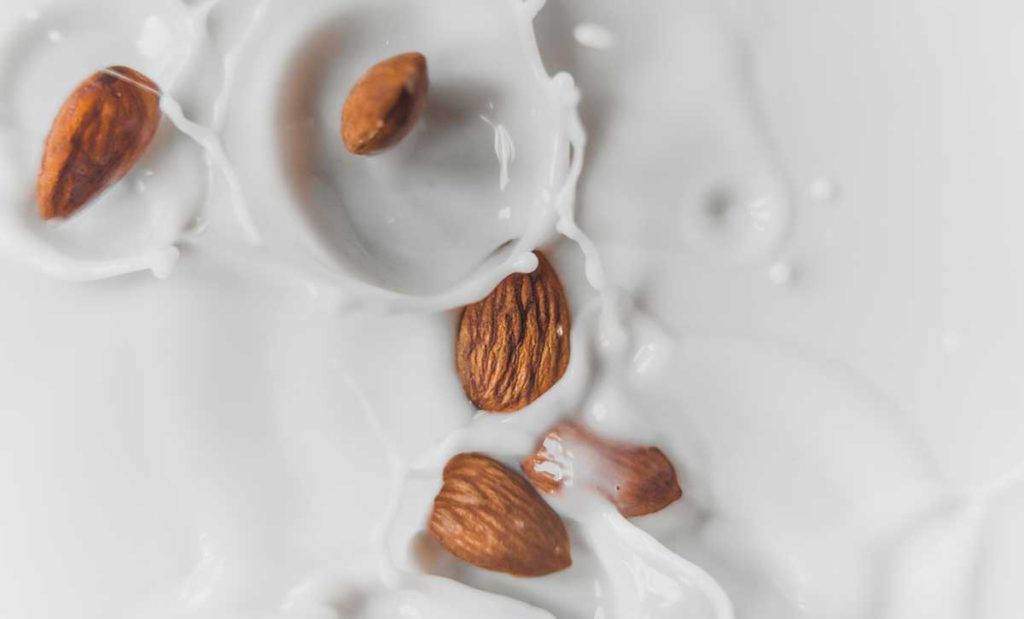
Avoid all dairy products. Ghee also known as clarified butter is a safer alternative than butter. During the cooking process, milk proteins fall to the bottom. By straining it through cheesecloth it removes casein and lactose.
The only store-bought brand I trust is Pure Indian Foods. They use organic, grass-fed, and pasture-raised cows. Ghee is easy to make and a lot cheaper than store-bought. When making ghee make sure you use unsalted, grass-fed butter.
Because dairy products are associated with more MS flares it’s best to avoid all dairy products including ghee.
Unsweetened dairy alternatives:
- Coconut milk
- Flaxseed milk
- Hemp milk
- Nut milk (almond, cashew, hazelnut, etc.)
- Yogurt made from the above kinds of milk
Dairy alternatives include carbohydrates and protein = 2 of the 3 macronutrients.
Fats and Oils
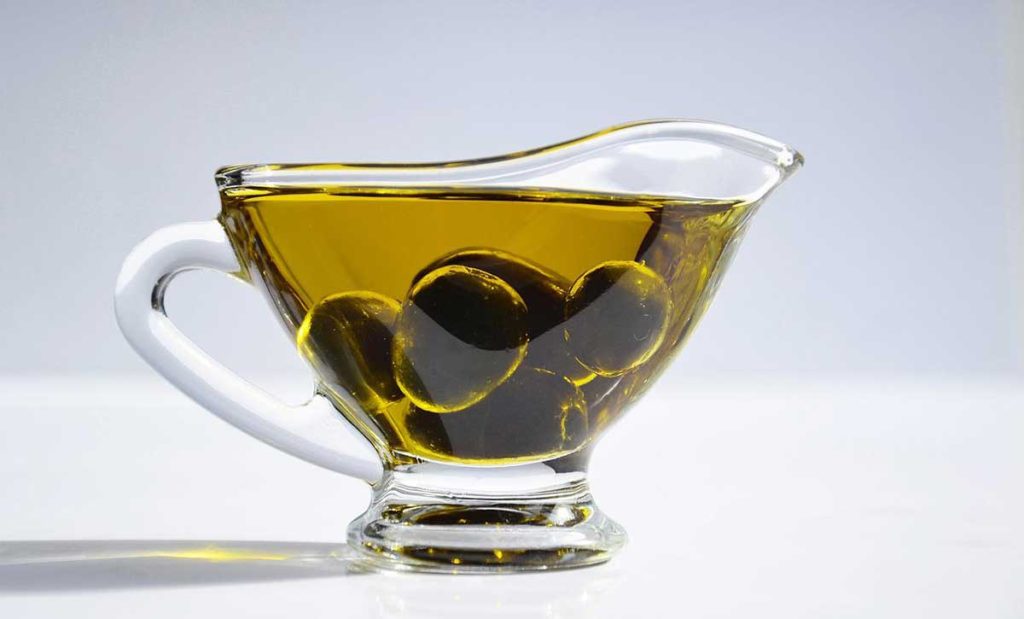
For decades scientists thought fats were bad for us but it depends on what kind of fat. Healthy fats are a macronutrient, they help keep inflammation in balance. Meaning, that our body needs them. There are different kinds of fats and some of them are bad such as trans fats. But, good fats such as omega-3 fats are essential nutrients, especially for people with MS.
Healthy fats and oils play a significant role in the progression of MS. Dr. Roy Swank found saturated fats lead to MS relapses and disease progression. His diet, The Swank Diet, has MS patients avoiding red meat for the first year.
The myelin sheath is the protective covering around nerves. MS attacks and destroys myelin causing disabilities. Myelin contains fatty substances and protein. Healthy fats and oils help protect and rebuild damaged myelin.
It is essential to eat healthy fats and oils to stop the progression of MS. They also help lower inflammation which is the leading cause of MS.
When buying healthy oils choose cold-pressed, organic, non-GMO, and unrefined.
Healthy fats and oils include:
- Avocado
- Coconut milk, unsweetened
- Coconut oil
- Duck fat
- Fatty fish such as mackerel, salmon, sardines, and trout
- Ghee, use in moderation (clarified butter)
- Flaxseed oil (use in moderation)
- Lamb fat
- MCT oil
- Nut oils except for peanut (it’s a legume)
- Olive oil
Fats and oils break down in heat, light, and oxygen and become rancid. Keep oils in a dark glass container and if they smell bad throw it out.
Fats are one of the macronutrients.
Nuts and Seeds
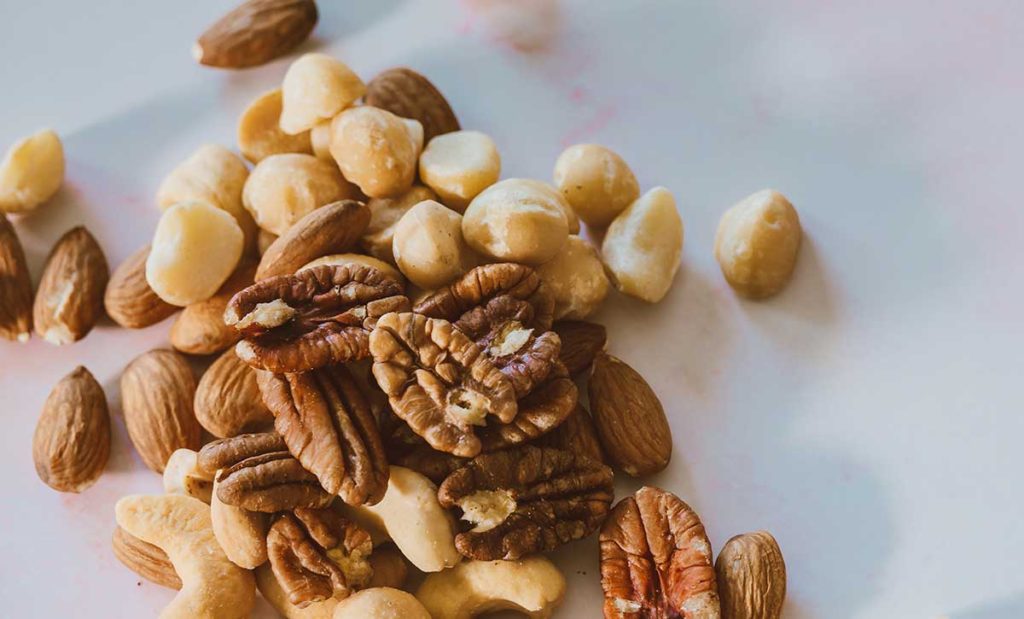
When buying nuts and seeds choose raw and unsalted, organic if possible. It is best to soak them first to remove phytic acid for better digestion. Nuts and seeds also produce enzyme inhibitors. But, they bind to nutrients contributing to nutrient deficiencies and digestive irritation.
- Place the nuts or seeds in a jar of water making sure they are completely submerged.
- Leave it uncovered on your kitchen counter for at least 7 hours, preferably 24 hours.
- Rinse them in a colander and spread them on a baking or dehydrator sheet.
- Bake in the oven at the lowest temperature or in a dehydrator until completely dry. Make sure the nuts or seeds are dry to prevent mold.
If you buy ground chia seeds or ground flaxseeds you do not need to soak them first. It is best to buy whole seeds, soak them, then grind them yourself to get the most nutrients. I use a coffee/seed grinder I bought from Amazon.
Nuts and seeds include fats and protein = 2 of the 3 macronutrients.
Protein
Protein is a macronutrient that contains amino acids. amino acids. It helps build and repair muscles and bones and to make hormones and enzymes. Protein also helps stabilize blood sugar which is important for brain health.
An average protein serving is 3–4 oz, about the size of your palm. When eating an animal protein choose animals that eat and live healthily. Unlike conventionally raised animals that eat grains and soy. They also live in crowded and unhealthy environments.
Studies link eating lots of red meat to an increased risk for MS. It is best to limit the amount of red meat, you should eat no more than two servings per week. Grass-fed meats are best to avoid antibiotics, growth hormones, grains, and soy.
Healthy proteins:
- Almonds
- Avocados
- Chia seeds (2 tablespoons equals one serving)
- Flaxseeds (2 tablespoons equals one serving)
- Grass-fed and finished meats
- Pastured-raised poultry
- Pumpkin seeds
- Spirulina (one serving is 5 grams)
- Wild-caught fish
Protein is one of the 3 macronutrients.
Vegetables
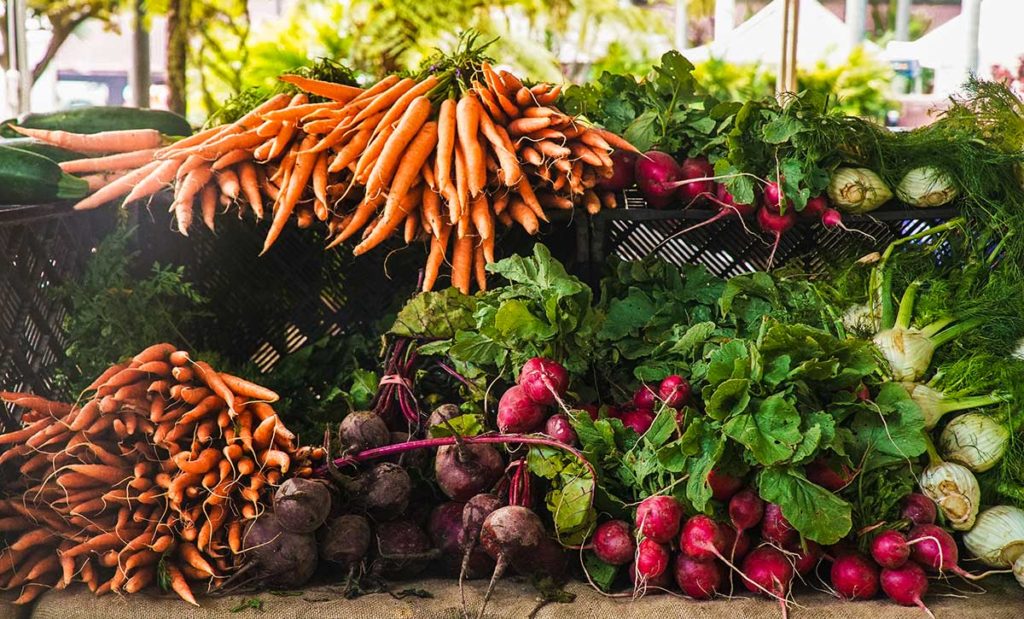
Vegetables and fruit are vital for your health when living with MS they should be on every menu plan. This is where you get your micronutrients (vitamins and minerals). They contain fiber which helps keep you regular, a common problem for people with MS. They also have carbohydrates which are one of the macronutrients.
Produce also has antioxidants and phytonutrients which protect your brain. Dr. Terry Wahls, the author of The Wahls Protocol, recommends 9 cups each day. She breaks it down into 3 cups per group.
Dr. Wahls recommends 3 cups each day of:
- Leafy greens
- Colorful (one cup of fruit, berries are best)
- Cruciferous (sulfur) such as asparagus, broccoli, cabbage
Starchy vegetables such as beets, turnips, and sweet potatoes are higher in carbohydrates. Limit these to no more than one serving per day. – One serving equals 1/2 cup.
Fruit is also higher in carbohydrates so it is best to limit these. Berries have lower carbs and are high in antioxidants. Blueberries have one of the highest antioxidants and they help control blood sugar. Green apples are also lower in carbs compared to red apples. Try cooking them in a frying pan with coconut oil and cinnamon.
Eating produce when they are in season tastes best, plus it will save you money at the grocery store. Think of the rainbow when planning your meals. Choose organic as much as possible to avoid pesticides. Farmworkers who are around pesticides more often have a higher rate of MS.
If money is tight, choose organic only if it shows up on the Dirty Dozen list. This is a list of produce with the most pesticides. It is also best to eat fruit with a little protein. Next time you eat a small bowl of berries add nuts such as sliced almonds.
What to Drink
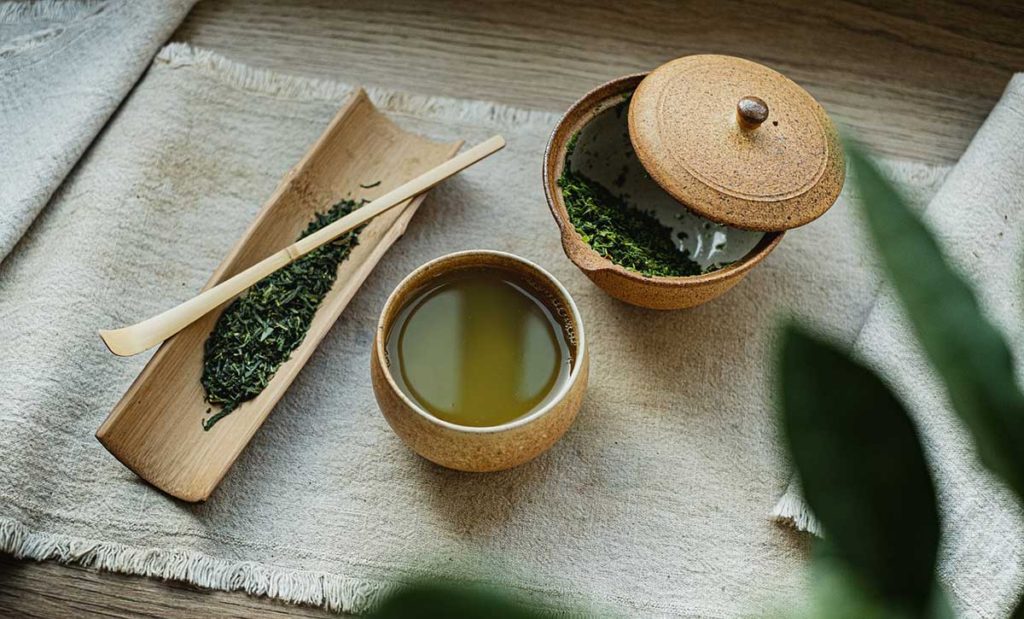
Clean, filtered water is the best thing you can do for your body. It helps keep you hydrated, flushes out toxins, and to stay regular. People with MS tend to cut back on water due to bladder issues. Instead, drink small amounts of water throughout the day. After a while, your body will get used to the extra water.
Aim for 8-8 oz. glasses (2 liters) of water each day.
Herbal teas can help with bladder issues, sleeping problems, stress, and more. Green tea is very beneficial for brain health and reduces oxidative damage. Tea is a diuretic that makes you have to go to the bathroom more often. It is best to drink herbal tea earlier in the day and not in the evening before bed.
The Perfect Menu Plan for MS
Creating the perfect menu plan for your MS does not have to be complicated. Living with MS is hard so when you plan your menu keep it simple. Look for recipes with few ingredients and…
- Consume mostly vegetables and one cup of low-sugar fruit each day
- Drink plenty of water
- Eat moderate amounts of protein, free from toxins
- Include healthy fats
- Keep your carbohydrates low
- Use herbs such as ginger, oregano, and turmeric – they are healing
Quick Links To Information In This Post:
Besides food, balance hormones, exercise, get plenty of sleep, lower your stress, and remove any infections. Infections could be Epstein-Barr Virus (EBV), Lyme disease, mycotoxins, SIBO, or yeast overgrowth (candida).
If you missed the first part of this story please read: How To Create The Perfect Diet for MS

Free Wellness Library!
Subscribe for free and I’ll send you the password to my secret library filled with many printables for your wellness journey.
Want to remember this health tip? Pin it to your Pinterest board!
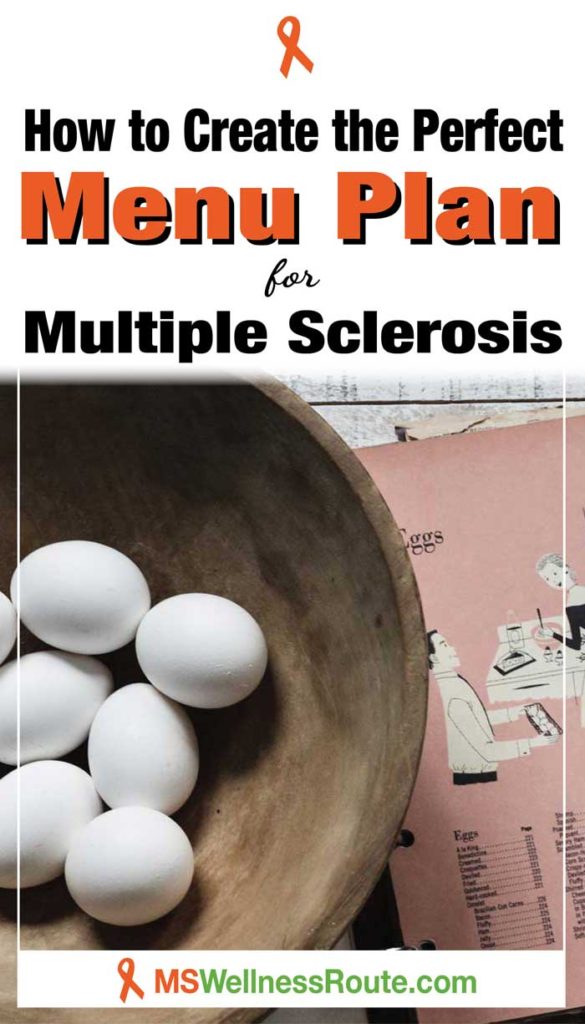
Photo by Karolina Grabowska, Jess Loiterton, and Wendy Wei from Pexels, by Austin Wilcox on Unsplash, and by Mareefe and Mirko Stödter from Pixabay.
How to Create the Perfect Menu Plan for MS





